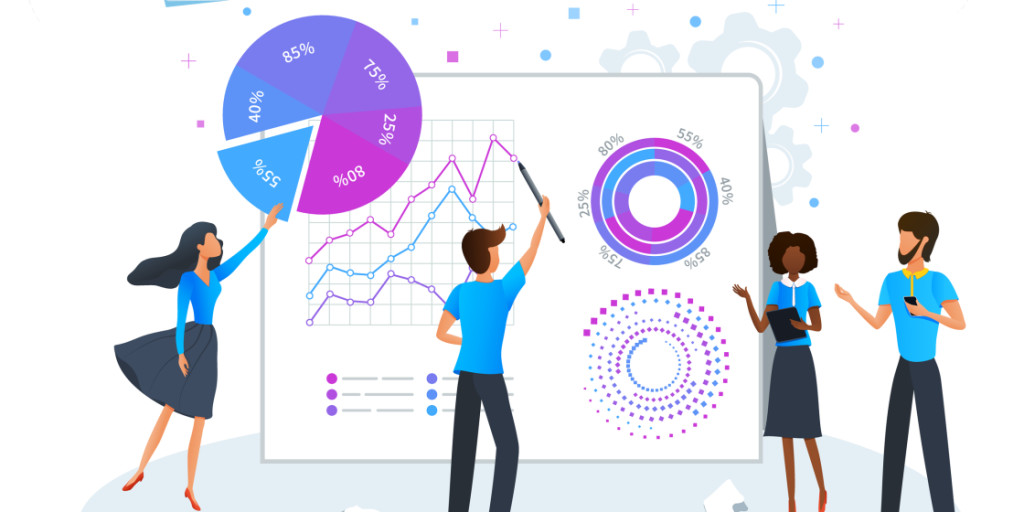Home / Blog / An Experts View / Why Leveraging Data in the Digital Age is Crucial to Business Success
Why Leveraging Data in the Digital Age is Crucial to Business Success
Date posted: 29th November 2022 in An Experts View
Last updated: 29th November 2022

Introduction
Rob Mobsby is an expert in all things digital, with over 17 years’ experience working in digital transformation and creation from start-ups all the way to multinational organisation level. His experience in multi-channel campaigns and global territory expansion with Amazon positions him as a leader in the field. He joined EverythingBranded in 2018 to oversee a company on the ascendancy with a new HQ in Las Vegas being among the plans for rapid expansion. Rob’s role involves overseeing the digital transformation of the business at all levels and enhancing the sector delta in data value and significance.
Make no mistake: data is now the single biggest piece of power any business can wield with a view to grow and scale. Not knowing how, why and who makes life difficult in attempts to pivot, or simply improve in-store and online. This applies to nearly every sector.
In an increasingly competitive and busy online landscape, data can make a huge difference in the acquisition of customers and sustaining their attention on your business. The right data builds a strong foundation for enterprise and long-term engagement.
Data is power. This is why businesses currently trend towards describing themselves as a tech business, rather than as retail or a car manufacturer. Does Tesla primarily ship electric vehicles or is it in the business of data, leveraging analytics collected by a myriad of sensors and GPS to construct an unparalleled vision of the world? Many billions of miles of real-world driving data collected would suggest the latter.
Each nugget of data can tell you something and offer insight; it makes decisions easier and imbues greater confidence into business processes.
What Data Means to a Business
A pool of data can take many forms: it can be an email, telephone number, buying history or even likes. This is an invaluable source of information which can be put to work.
In its simplest form, possessing email addresses allows you to communicate with a customer as does a phone number, so long as permission has been granted.
Now imagine the limitless combinations of data put together. Suddenly, you can match an email with buying history. Emails can be timed to hit customers’ inbox at a certain time or date and if they open or ignore it, you can make a further decision based on how they interacted, if they purchased again or even if they went on to buy something totally different than the original item.
In practice, our firm Everything Branded sells both products and services; we gather information via online and offline channels, to then use this to provide an outcome from which we either expect a sale or further communications to get an end sale. With very basic information we can provide a reasonable service, but with depth we can tailor the experience. This ultimately leads to a much better experience for the customer.
As an example, we may receive an online enquiry for 100 pens in one colour with a logo. We can create Quote A from this, but a call to the customer allows us to ask more questions in order to provide Quote B, with greater confidence and insight into what the customer needs these for. It even opens the door to recommending other products they might need.
Data allows the company to be agile to consumer needs and demands which may be fairly unique to each situation. Better understanding the circumstances through data collection massively increases the likelihood of retention.
Overcoming Hurdles
Bad data creates hurdles and challenges. Without the right data, or enough data, you are fighting an uphill battle from day one and this cannot often be overcome without compromising business processes designed to create the best customer journey possible.
In our industry, we have the manufacturer, distributor and end user. If we start with poor data from the manufacturer, then it translates directly to poor quality data for the end user. Therefore, the distributor (us) has to update and improve the data in order to improve the end user experience.
This is time consuming, challenging and a constant process given that manufacturers change pricing and products every year. We compete across multi channels with other distributors, and if we try to introduce new techniques, or B2C techniques into a traditional B2B environment, the end user experience can break down entirely.
However, in our market there are solution providers that help distributors create a seamless end user experience. But be warned: if you want to scale across product, territory and revenues then this solution needs to run in concordance with good data.
Good Data and the Customer Journey
More than ever, firms are competing in online sectors on a customer experience (CX) level. Because if many businesses purvey the same products at a similar price, the million-dollar question is how do they win the customer?
By way of demonstration, you may find three companies sell the same trainers with a similar online buying journey.
A customer now has options, and the ability to make an informed decision based on their needs or requirements. There is no single correct answer, and this is the beauty of ecommerce: a company can differentiate itself from the competition in various ways. They might well find data drives this sort of decision-making.
Useful Data at Scale
For Everything Branded, our industry lags behind retail and more familiar online industries. But there is no excuse for not jumping into the same initiatives. I believe the gap between B2B and B2C is rapidly closing due to the change in B2C experiences.
In my view the biggest way forward is to use an API feed.
We’ve decided it’s an essential component and deem it to be part of the future of our industry particularly concerning data. The only solution moving forward for us is indeed to use an API feed as it offers a real time solution to counter changes in data by the manufacturer, for example. However, an API is not easy to build and can be resource heavy.
We actively work with manufacturers to understand the importance and efficiencies and API provides.
This is one challenge to overcome, the next is to reconcile the many ways to collate data - from web forms, chat facilities, by phone and so on — with the ways you collect data in reference to trends or the need to filter at a greater level. Adding additional data fields can certainly impact conversion rates so it’s a minefield at times.
The Bottom Line: Making Customers Return
Every online business should be looking for the highest lifetime value (LTV) per customer. They know providing great products and services is paramount to achieving this: it can be done by having an easy checkout process, storing customer data, offering rewards and incentives all with the goal to encourage the customer to purchase again and again.
Sometimes, even if a customer encounters a bad experience, factors such as speed and account creation become so good, they don’t even think about going elsewhere. Amazon is perhaps the greatest example of this in play.
Everything Branded is the UK arm of the business which benefits from a positive 40/60 ratio for new/existing customers. We know that returning customers spend more, therefore we need to ensure that in future we convert a greater number of potential customers who then return multiple times a year.
The ultimate goal? To create a multi-layered user journey and experience depending on where the customer is along that road. And without good data, you’d be going in completely blind.
Strengthen your brand perception with promotional products
Chat online or call us today on 0116 366 0052
More Articles

Why Leveraging Data in the Digital Age is Crucial to Business Success
29th November 2022 in An Experts View

Round Table Meeting: Building the Brand!
7th March 2023 in Branding Advice


